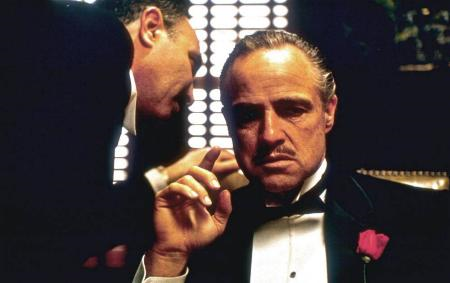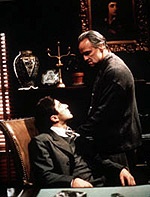Cinematography: Introduction to lighting effects
Modification of an image in current times is a matter of technological choice and one can consider his work done. What was known to be art is now known as science. Many variables have to be considered by the cinematographer such as lighting controls and the management of the image after production (Brown, 2002). The Godfather is a good combination of technical and associated elements which are equally clear, a few of which earn extraordinary credits.
The photography, which sheds the initial parts of the film in subtle sepia tones and covers most of the scenes in a profound veil of silhouette, is brilliantly controlled. Mastering the art of face lighting is simply about discovering how to command every facet of the visual feeling and strong sentiments of a scene (Brown, 2002). In the past lighting began with meager reflectors readdressing the sun. It developed into basic infantry searchlights. Later we saw the advent of vapor lights, which light operators controlled with vessel sticks. Today gaffers have a broad variety of complicated lights to assist command, form and stylize precisely how cinematographers select lighting to drop on faces (Brown, 2002).
With the enhancement of both digital sensors and movie compassion, photographers are now adept to work at smaller grades. This has opened the doorway for use of suppler lighting effects, which are in detail far more pardoning in illumination features than harsh lighting resources. Because precedent photographers of the past sharpened their equipment in the period of hard source lights, they routinely gleaned larger information in comprehending the form of a face, cheekbone formation, jawline power, eye depth, hair extent and so forth (Brown, 2002).
The Movie: Godfather
Mario Puzo’s “The Godfather” is an unforgettable movie on the subject of gangsters and was the starting point for movies of this genre (Raeisi, 2010 ). Frances Ford Copolla directed the movie and made numerous diversified resourceful ways to depict this mobster standard. The movie was very dissident, but it the one of its kind. The movie’s cinematography can b interpreted through the use of lights in The Godfather since this has numerous dissimilar lighting effects.


One of the unusual features of The Godfather is the photography or cinematography. The motion picture looks grainy and repeatedly obscure, proposing logic of practicality coldly, with a likelihood of more dramatic, captivating apparition. These con men are not shown as admirable characters (Raeisi, 2010 ).
Instead, in the course of the use of illumination, camera perspective, and colors, they are offered as deeply divergent souls that take action in accord with their settlement with life. A mob is a family unit and there is a sure set of regulations and functions to cooperate.
At that time Gordon Willis was one of the pioneers on the foremost rim of a contemporary wave of photographers who were altering the skill type in essential manners. In ‘The Godfather’, he selectively veiled Marlon Brando’s eyes to hide his feelings from the viewers. There was a valid reason for not being able to view Brando’s eyes in most parts of the movie. At that time the cinematographer did not want the viewers to know what the character was thinking and the reason for this was that the director wanted to feel the soul of the character for a while (Puzo, 1969).
The realm of Cinematography and the viewer
An eye light is one element that develops a small twinkling effect in the eyes of the person being photographed. This is to being life and emotions to the eyes of the character. We, the audience would not be able to attach ourselves to the character, because we don’t get to see their expressions very clearly (Giannetti, 2007).
The audience certainly looks into the eyes of the person to see what he is feeling and what he is trying to convey. This is not possible without that tiny twinkle in the eye and the scene would look meaningless and mysterious (Raeisi, 2010 ).
This concept was used very intelligently by Gordon Willis while working with Godfather (1972). He kept Marlon Brando’s eyes shaded throughout the movie which was accrued because of the lighting design (Brown, 2002). This dark look prohibited the viewers from considering what the Godfather was feeling and also the sentiments behind the words he was saying.

If we look at the picture taken from the movie we can see that Don Corleone, the most talked-about character in the movie, looks strange and influential to depict the surroundings (Raeisi, 2010 ). This response is based on the characters from the film and the ambiance in which the movie was shot. It was the entire atmosphere that concluded the attitude of the character and the movie such as the dull and dark office where the light is very low and shows the mood of the characters as well as the script.
Conclusion
It is through movies like The Godfather which help us in knowing what lighting effects can do to the personality of the characters and the movie itself. It is this transformation of lights and effects that constitute the essence of the movie.
References
- Brown, B. (2002). Cinematography: Theory and Practice: Image Making for Cinematographers, Directors, and Videographers (1 ed.). Focal Press.
- Giannetti, L. (2007). Understanding Movies (11 ed.). Allyn & Bacon.
- Puzo, M. (1969). The Godfather. UK: Heinemann.
- Raeisi, D. (2010). Godfather – The Movie. Web.